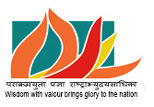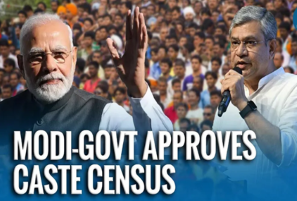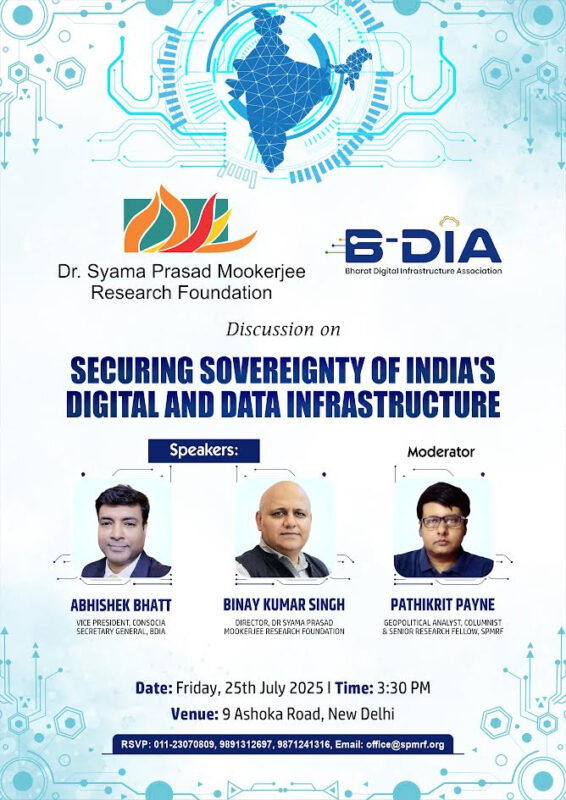In a landmark decision that reaffirms the commitment to inclusive governance and social justice, the NDA-led government has approved the inclusion of caste enumeration in India’s forthcoming national Census. Announced on April 30, 2025, this historic move marks a pivotal moment in India’s journey toward equitable development, dismantling myths of division and embracing data-driven empowerment. Far from being a mere electoral maneuver, the caste census is a transformative instrument designed to uplift marginalized communities, align with constitutional values, and realize the vision of a united, prosperous, and Viksit Bharat.
A Vision Rooted in Social Justice
Prime Minister Modi’s approval of the caste census is not a reactionary policy but a carefully considered step toward addressing India’s complex social realities. For decades, the absence of comprehensive caste data has hindered policymakers’ ability to craft targeted interventions for marginalized communities. The last detailed caste census was conducted in 1931, leaving a significant gap in understanding the socio-economic conditions of various caste groups. While data on Scheduled Castes (SCs) and Scheduled Tribes (STs) has been collected since 1951, the lack of information on Other Backward Classes (OBCs) and other caste groups has perpetuated inequities, as policies often rely on outdated or incomplete assumptions.
Modi’s vision transcends these limitations. By greenlighting the caste census, his government acknowledges that caste remains a lived reality for millions of Indians, shaping access to education, employment, healthcare, and political representation. As Union Minister Ashwini Vaishnaw articulated, “This demonstrates that a government is committed to the values and interests of a society and country.” The decision aligns with the philosophy of Babasaheb Ambedkar, who emphasized that social democracy is the bedrock of true equality. By ensuring a transparent and systematic enumeration of castes, PM Modi is laying the foundation for a data-driven approach to social justice, one that empowers the marginalized without deepening divisions.
Beyond Electoral Politics: A Commitment to Antyodaya
Critics may attempt to frame the caste census as a political ploy, particularly with elections looming in states like Bihar. However, such narratives overlook the broader context of PM Modi’s governance model, which prioritizes the upliftment of the “last citizen in the village,” as envisioned by Pandit Deendayal Upadhyaya. The caste census is not about pandering to vote banks but about creating a robust database to inform policies that benefit the most disadvantaged. As a leader who himself hails from an OBC community in Gujarat, PM Modi understands the transformative power of opportunity and representation. His rise from humble beginnings to the highest office in the land is a testament to the potential of inclusive policies.
The Modi government’s track record underscores this commitment. From appointing leaders from SC, ST, and OBC communities to key positions in the Union Cabinet to ensuring representation through historic appointments like India’s first tribal woman President, Droupadi Murmu, the BJP under Modi has consistently championed subaltern empowerment. The caste census builds on this legacy, providing the empirical foundation needed to address disparities in education, employment, and resource allocation. As a senior BJP leader noted, “The census findings will empower primarily the non-dominant backward castes,” ensuring that smaller, often overlooked communities receive their due share of opportunities.
The Need for a Caste Census: Insights from Mandal Commission Report
The demand for a caste census has been articulated in several landmark reports, most notably the Mandal Commission Report (1980), which underscored the necessity of caste-based data to address socio-economic inequalities. The Commission, established to identify socially and educationally backward classes, recommended a systematic caste census to provide accurate data on the population and economic conditions of Other Backward Classes (OBCs) and other marginalized groups, including those within minority communities. It emphasized that “the absence of reliable data on caste composition and socio-economic status hampers the formulation of effective policies for affirmative action and resource allocation.” The report highlighted that caste, as a determinant of social and economic disadvantage, intersects with religious and regional identities, necessitating a nuanced understanding of disparities within minority communities such as Muslims, Christians, and Sikhs, who often belong to backward caste groups.
The Mandal Commission’s recommendations were pivotal in advocating for a 27% reservation for OBCs in government jobs, but its call for a caste census was largely ignored by successive governments. The Commission argued that without updated caste data, policies risk being misdirected, benefiting dominant castes while neglecting smaller, more disadvantaged groups, including minority sub-castes like Pasmanda Muslims or Dalit Christians. This recommendation remains relevant today, as the 2025 caste census will provide critical insights into the economic disparities within minority communities, enabling targeted interventions to uplift groups that have been historically overlooked.
Economic Disparities in Minority Communities: A Neglected Issue
For decades, the issue of economic disparity among minority communities has been sidelined, with governments prioritizing electoral politics over substantive reform. Despite India’s constitutional commitment to equality, the socio-economic conditions of minority groups, particularly those belonging to backward castes, have remained under-addressed. The Sachar Committee Report (2006), which examined the socio-economic status of Muslims, revealed stark disparities: Muslims, especially those from OBC and Dalit backgrounds, lagged significantly in education, employment, and access to public services. The report noted that “the lack of
disaggregated data on caste within minority communities obscures the specific challenges faced by backward caste Muslims,” recommending a caste-based enumeration to address these gaps.
Similarly, studies like the 2018 research by Savitribai Phule Pune University, Jawaharlal Nehru University, and Indian Institute of Dalit Studies highlighted that upper-caste Hindus own 41% of national assets, while OBCs (including minority OBCs) own 31%, and Scheduled Castes (SCs) and Scheduled Tribes (STs) own just 7.6% and 3.7%, respectively. This skewed distribution underscores the economic marginalization of backward caste minorities, such as Pasmanda Muslims or Dalit Sikhs, who face compounded discrimination based on caste and religion. The absence of a caste census has perpetuated this blind spot, as policymakers lack the granular data needed to address intra-community disparities.
Over the last several decades, successive governments, particularly those led by the Congress, have failed to conduct a comprehensive caste census, despite demands from opposition parties and civil society. The Socio-Economic and Caste Census (SECC) of 2011, initiated under the UPA government, was a missed opportunity, as its caste data was never fully released due to political apprehensions. This reluctance reflects a broader trend: caste has been weaponized as an electoral tool rather than addressed as a socio-economic issue. For instance, parties have often promised reservations or welfare schemes to specific caste groups to secure votes, without the empirical data to ensure equitable implementation. This approach has particularly disadvantaged minority communities, whose caste-based identities are often ignored in favor of broad religious categorizations, leaving groups like OBC Muslims or Dalit Christians without targeted support.
PM Modi’s Vision: Empowerment Through Data
Prime Minister Modi’s decision to include caste enumeration in the national Census breaks this cycle of neglect and tokenism. His government’s approval, announced by Union Minister Ashwini Vaishnaw, is framed as a commitment to “strengthen the social and economic structure of our society while the nation continues to progress.” Unlike previous administrations, which shied away from caste data to avoid political backlash, PM Modi’s leadership embraces the challenge, recognizing that accurate data is the cornerstone of meaningful social justice. The caste census will provide a reliable database to identify disadvantaged groups, including backward caste minorities, and ensure equitable distribution of resources, as noted by Congress president Mallikarjun Kharge in his 2023 letter to the PM.
This move aligns with PM Modi’s philosophy of Antyodaya and Sabka Saath, Sabka Vikas . By collecting caste data, the government aims to address disparities not only among Hindu caste groups but also within minority communities. For example, the census could reveal the socio-economic conditions of Pasmanda Muslims, who constitute a significant portion of India’s Muslim population but are often excluded from OBC benefits due to inadequate data. Similarly, it could highlight the plight of Dalit Christians and Sikhs, who face caste-based discrimination despite their religious identity.
Navigating Challenges and Ensuring Unity
While some critics contend that a caste census might reinforce caste divisions or risk alienating upper-caste voters , a concern even echoed by the Rashtriya Swayamsevak Sangh (RSS), which supports the exercise but cautions against its politicization, India today finds itself at a unique crossroads. Under the leadership of Narendra Modi, there exists both the political capital and ideological clarity to navigate these concerns effectively.
BJP’s inclusive vision of Hindutva, which has successfully integrated non-dominant OBCs, Dalits, and upper castes under a shared Hindu identity, has proven resilient and transformative in politically complex states like Uttar Pradesh. In this context, the caste census does not threaten social cohesion; instead, it serves as a strategic instrument to address historical disparities without amplifying social fault lines.
Accurate data is the cornerstone of targeted welfare. A caste census provides the empirical foundation to dismantle entrenched systemic inequities and ensure that marginalized sub-castes within the broader backward category receive their due share in policymaking and welfare distribution. As a senior leader noted, “The census findings will empower primarily the non-dominant backward castes, ensuring that smaller minority sub-castes are not overshadowed by dominant groups.”
However, to ensure that the census functions as a catalyst for unity and not division, the government must proactively tackle operational and structural hurdles. The shortcomings of the 2011 Socio-Economic and Caste Census (SECC), particularly the lack of standardized caste classifications and issues surrounding data verification—serve as valuable lessons.
With the strategic use of technology, transparent protocols, and independent oversight mechanisms, the Modi administration is well-positioned to deliver a robust and credible dataset. Such a dataset can withstand political scrutiny while becoming a cornerstone for evidence-based, inclusive development.
Ultimately, the caste census, when implemented with sensitivity and precision, aligns with the national vision of a just, equitable, and unified Bharat. It represents not merely a counting exercise, but a foundational step toward realizing the promise of “Sabka Saath, Sabka Vikas, Sabka Vishwas”.
A Legacy of Transformative Justice
The caste census, approved under the leadership of the NDA Government, marks a bold and progressive step toward addressing long standing economic disparities, particularly among marginalized and minority communities. By revisiting the unfulfilled mandate of the Mandal Commission and acknowledging the findings of the Sachar Committee on minority deprivation, the Modi government is moving beyond the confines of electoral tokenism. This initiative empowers historically disadvantaged groups, including backward caste minorities, by establishing a solid empirical foundation for data driven and targeted policy making.
As India charts its course toward becoming a Viksit Bharat by 2047, the caste census stands as a powerful testament to Prime Minister Modi’s enduring commitment to social justice. It reflects a governance model rooted in inclusion and accountability, where no community is left behind. Rather than deepening social divides, this census is a national pledge to unite the country through equity, opportunity, and shared prosperity. It upholds the constitutional vision of a just and inclusive society, ensuring that development reaches every corner of the nation.
(The views expressed are the author's own and do not necessarily reflect the position of the organisation)


